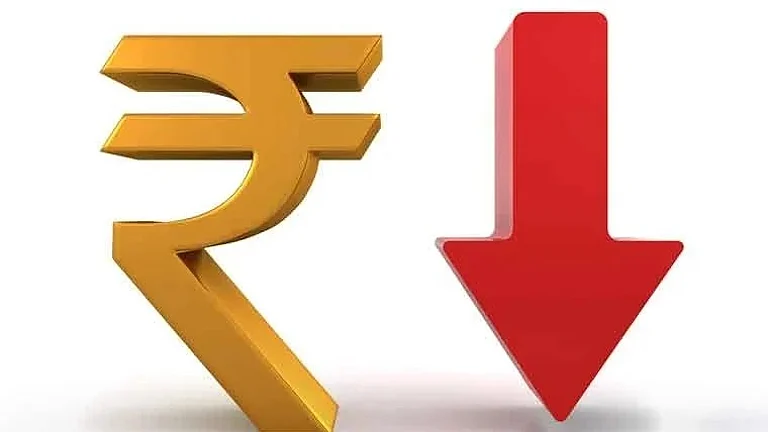
RBI unveils measures to boost rupee use in global trade
Reference rates introduced for key trade partners
Overseas rupee accounts can now invest in corporate bonds and CPs
The Reserve Bank of India (RBI) has announced a slew of measures to push global acceptance of the rupee and reduce dependence on the dollar, a move spurred by the pressure of steep US tariffs on its currency and trade outlook.
Observing that India has been making steady progress in the use of the Indian Rupee for international trade, RBI Governor Sanjay Malhotra said permission has been granted to Authorised Dealer banks to lend in Indian Rupees to non-residents from Bhutan, Nepal and Sri Lanka for cross-border trade transactions.
Besides, he proposed to establish transparent reference rates for currencies of India’s major trading partners to facilitate INR-based transactions. In addition, the central bank has also permitted wider use of Special Rupee Vostro Account (SRVA) balances by making them eligible for investment in corporate bonds and commercial papers.
These steps will help reduce pressure on forex and keep the current account deficit at a comfortable level.
What’s Driving RBI’s Changes?
The central bank introduced new reference rates for key trade partners like the UAE and Indonesia to cut transaction costs for banks and boost inflows. It also widened the investment options for certain overseas account holders and allowed banks to extend rupee loans in three neighbouring nations.
R. Gurumurthy, a retired regional director at the RBI, as quoted by Bloomberg, said the central bank hopes to enable direct pricing of trades in rupees and the currencies of partner countries, instead of routing them through the dollar.
“This is important because when India trades with other countries, transactions are typically channeled via the dollar, adding a costly layer,” he told the newswire.
Furthermore, the focus on expanding the bouquet of services for basic bank savings deposit accounts through mobile and internet services will also have a positive impact on consumers, Indian Overseas Bank MD & CEO Ajay Kumar Srivastava said.
How Rupee Is Performing?
The rupee has emerged as Asia’s weakest currency this year due to steep US tariffs. Even with the dollar easing, it has slipped 3.6% against the greenback—raising inflation concerns for fuel-dependent India and dampening investor appetite.
However, after the monetary policy, the rupee recovered 9 paise from its all-time closing low to settle at 88.71 against US dollar on Wednesday.
Forex traders said the rupee advanced against the US dollar as the Reserve Bank of India (RBI) left the repo rate unchanged at 5.5% and maintained a neutral stance in its fourth Monetary Policy of FY26.
Moreover, strength in domestic markets and a decline in crude oil prices and additional measures announced by the RBI governor to aid exporters further strengthened the domestic currency.
At the interbank foreign exchange, the rupee opened at 88.79 against the US dollar and touched an intraday high of 88.65 and finally settled for the day at 88.71, higher by 9 paise from its previous close.
On Tuesday, the rupee fell 5 paise to an all-time low of 88.80 against the US dollar.
What Banking Experts Say?
State Bank of India Chairman CS Setty said, "The policy statement was an authoritative one towards unveiling of market reforms and moving beyond the rate actions. The move towards a risk-based deposit insurance premium will facilitate significant improvement in the bottom line of sound banks".
The withdrawal of framework related to specified borrowers and allowing M&A financing by Indian banks are growth accretive and will foster incremental credit flow from banks, he added as quoted by PTI.
Extension of timelines for repatriation from foreign currency accounts of Indian exporters in IFSC and forex outlay for Merchanting Trade Transactions, besides simplification of reconciliation processes in EDPMS/IDPMS portals, are welcome steps, as they will further enhance ease of doing business for the export sector, he noted.
"The measures towards enhancing customer satisfaction and protection, improved use of the rupee across cross-border transactions will strengthen the larger financial ecosystem in terms of acceptability and improved currency outlook over the medium term," he added.
Echoing a similar view, ESAF Small Finance Bank MD and CEO K Paul Thomas said with inflation remaining at a historic low, the space to support growth remains wide, even as inflation trends stay a key monitorable.
"The overall message is clear -- future policy will be data-driven, and the outlook remains supportive of growth despite global uncertainties...these measures are expected to further boost rural demand and investment activity, creating a favourable environment for sustainable growth," he said.

































